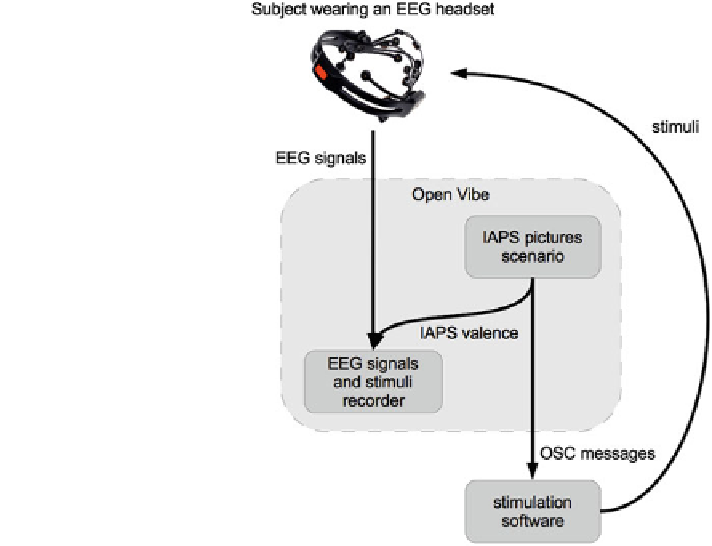Information Technology Reference
In-Depth Information
picture writes a stimulation in the recorded EEG signal stream corresponding to a
“
positive
”
or
“
negative
”
tag, basing itself on a displaying scenario and the IAPS
database.
These tags are used for classi
cation purpose: During the second phase, we feed
a linear discriminant analysis (LDA) classi
er with the
file containing the signals
and the tags. The classi
er then builds rules to recognize positive or negative
valence artifacts in the signals from this information. This occurs
“
of
ine,
”
and no
EEG signals are recorded during this phase (Fig.
11.6
).
The third phase is the validation phase: We do the same as during the
rst phase
with a new picture displaying scenario, but this time, the LDA runs in analysis
mode, so it continuously gives an estimation of the current valence from the sub-
ject
'
s incoming EEG signals. We can compare this estimation with the corre-
sponding valence values in the IAPS database (Fig.
11.7
).
In a previous work, TCTS laboratory had already assessed the quality of Emotiv
EPOC headsets, by comparing their performance in the framework of a P300-based
brain
computer interface with the performance reached using a medical EEG
system [on the basis of the same electrode con
-
guration, of course (Duvinage et al.
2012
). Figure
11.8
illustrates that, albeit giving worse results than those obtained
with the medical system, Emotiv EPOC headsets are usable for BCI applications.
Fig. 11.6
First phase of the
IAPS valence experiment

